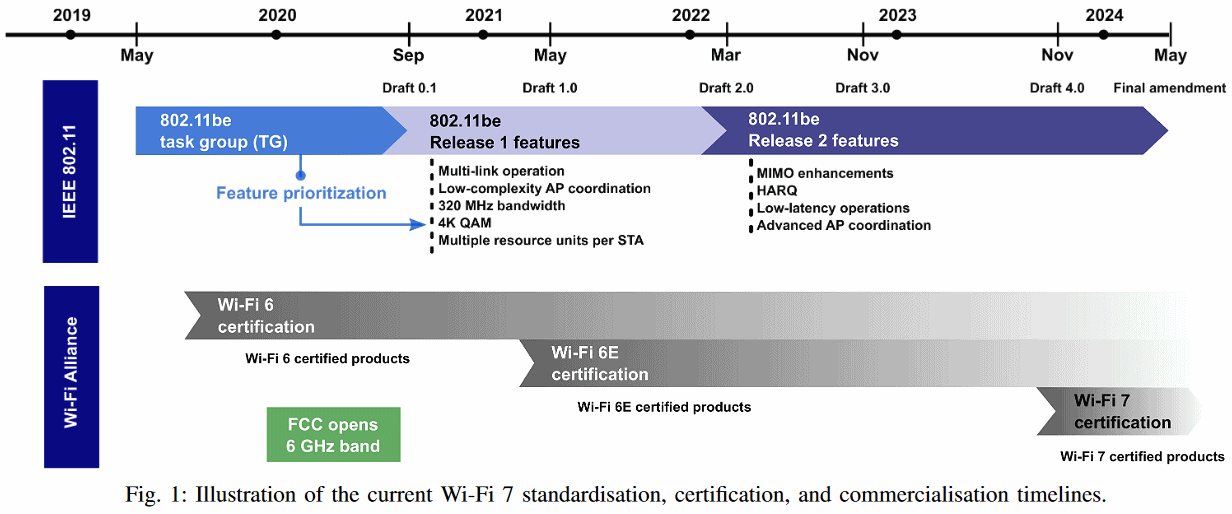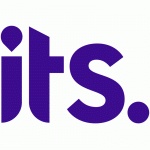Next Generation 30Gbps Wi-Fi 7 Standard 802.11be Takes Shape

A new research paper on the future Wi-Fi 7 (802.11be Extremely High Throughput) standard, which won’t be commercialised until late 2024, has revealed a lot more detail about what sort of technical features we can expect. Peak wireless speeds of 30Gpbs (Gigabits per second) and even lower latency are top of that list.
The first Wi-Fi 6 (802.11ax) kit, which can technically support peak speeds of up to 10Gbps, has only just recently started to enter the commercial market. On top of that we’ll soon be seeing Wi-Fi 6E, which is the first official variant of 802.11ax to support the new 6GHz radio spectrum band (here). Suffice to say that wireless home networks are about to get a serious performance boost, albeit a fairly expensive one for early adopters.
As usual the development of future wireless technologies often start at around the same time as the very latest standard begins to enter the market. The future Wi-Fi 7 specification is no exception to that rule, but until now we’ve only been given a vague idea of what to expect (the figure of 30Gbps – per access point – has been floating around for a few months).
Advertisement
Once again, the expectation is that we’ll continue to need ever faster wireless networks, which is just as true today as it will be in four years’ time. Whether due to the demands of future 8K TVs, multi-Gigabit FTTP / DOCSIS broadband networks, video games that chew up 1 TeraByte of hard disk space (we’re already at 200GB+ for some titles), those annoying Windows 10 updates or multi-gigabit capable broadband networks. Faster Wireless Local Area Network (WLAN) speeds will always be welcome.
At present the future Wi-Fi 7 standard is still very much in the early research and development stage, but a new paper posted by researchers to arXiv.org (PDF) gives us a fairly good idea of what to expect and the timing for its eventual implementation (credits to The Register for spotting).

Summary of 802.11be EHT Technical Features
Multi-Link Operation (MLO)
In simple terms, the additional of native support for multi-link operation is intended to deliver significantly improved data speeds and lower latency by making the best possible use of the 2.4GHz, 5GHz and 6GHz bands. Modern WiFi kit can already harness several links simultaneously, but these links are usually independent and MLO seeks to change that in order to make efficient use of the channel resources.
Low-Complexity AP Coordination
Better coordination of multiple WiFi Access Points, with APs advertising their capabilities in beacons / management frames, could reduce the number of collisions (vs under 802.11ax) and deliver more spatial reuse opportunities.
Support for 320MHz transmissions
Being able to harness more radio spectrum usually means more speed, thus 320MHz is a doubling of the 160MHz that could be harnessed by the prior Wi-Fi 6 standard.
Use of higher modulation orders
Modern wireless networks tend to make use of Quadrature Amplitude Modulation (QAM) technologies, which reflects a signal in which two carriers are modulated and combined into a single channel. The current Wi-Fi 6 standard supports 1024-QAM, which can carry about 25% more raw data than the 256-QAM of Wi-Fi 5 (802.11ac). By comparison Wi-Fi 7 is expected to support 4096-QAM with a strict -38 dB requirement on the error vector magnitude (EVM) at the transmitter.
Allocation of multiple resource units
At present Wi-Fi 6 already supports the use of Orthogonal Frequency-Division Multiple Access (OFDMA). Essentially this is a low power solution that allows for simultaneous low-data-rate transmission from several users (i.e. it chops WiFi channels up into hundreds of smaller sub-channels and gives each one a different frequency).
However, the implementation in Wi-Fi 6 is deemed to be insufficiently flexible and so Wi-Fi 7 will allow for the allocation of multiple resource units (i.e. groups of OFMDA tones, per station (STA)). The extra degree of flexibility should result in more efficient spectrum utilization.
MIMO Enhancements
At present Multiple-Input, Multiple-Output (MIMO) technology is nothing new and means that the network is capable of multitasking by sending data to multiple devices at once rather than one-at-a-time. But Wi-Fi 7 intends to double the maximum number of supported single-user MIMO (SU-MIMO) and multi-user MIMO (MU-MIMO) spatial streams to 16, with a consequent increase in capacity.
Hybrid Automatic Repeat Request (HARQ)
HAQRQ is said to be where devices do not discard erroneous information but attempt to softly combine it with retransmitted units to increase the probability of correct decoding (i.e. improving spectrum efficiency in case of the need for transmission retries). At present we still don’t know precisely what approach may be taken for this and so it’s one of several features that may follow in later drafts (see image above).
Low-Latency Operations
A number of the above changes, as well as various protocol enhancements, are expected to boost reliability and deliver further improvements to latency (network / server response times).
Advanced AP Coordination
The Wi-Fi 7 standard will seek to “reach the full potential of multi-AP coordination,” which it will aim to do through various improvements as a result of coordinated OFDMA, coordinated beamforming and joint single- and multi-user transmissions.
The above is on top of numerous other smaller improvements, although once again the caveat is that we won’t really know the full picture of final features until around the end of 2023. In the meantime, we’ve yet to even try one of the new 802.11ax based devices or routers and most of the initial run of kit won’t include support the new 6GHz band.
Advertisement
Suffice to say that it’ll be awhile before we’re writing about Wi-Fi 7 again, but in the meantime there’s lots still to come from Wi-Fi 6.
Mark is a professional technology writer, IT consultant and computer engineer from Dorset (England), he also founded ISPreview in 1999 and enjoys analysing the latest telecoms and broadband developments. Find me on X (Twitter), Mastodon, Facebook, BlueSky, Threads.net and Linkedin.
« Mobile Operators Call on UK to Speed-up Planning Changes
Early SpaceX Starlink LEO Broadband Speedtests Disappoint »























































Comments are closed